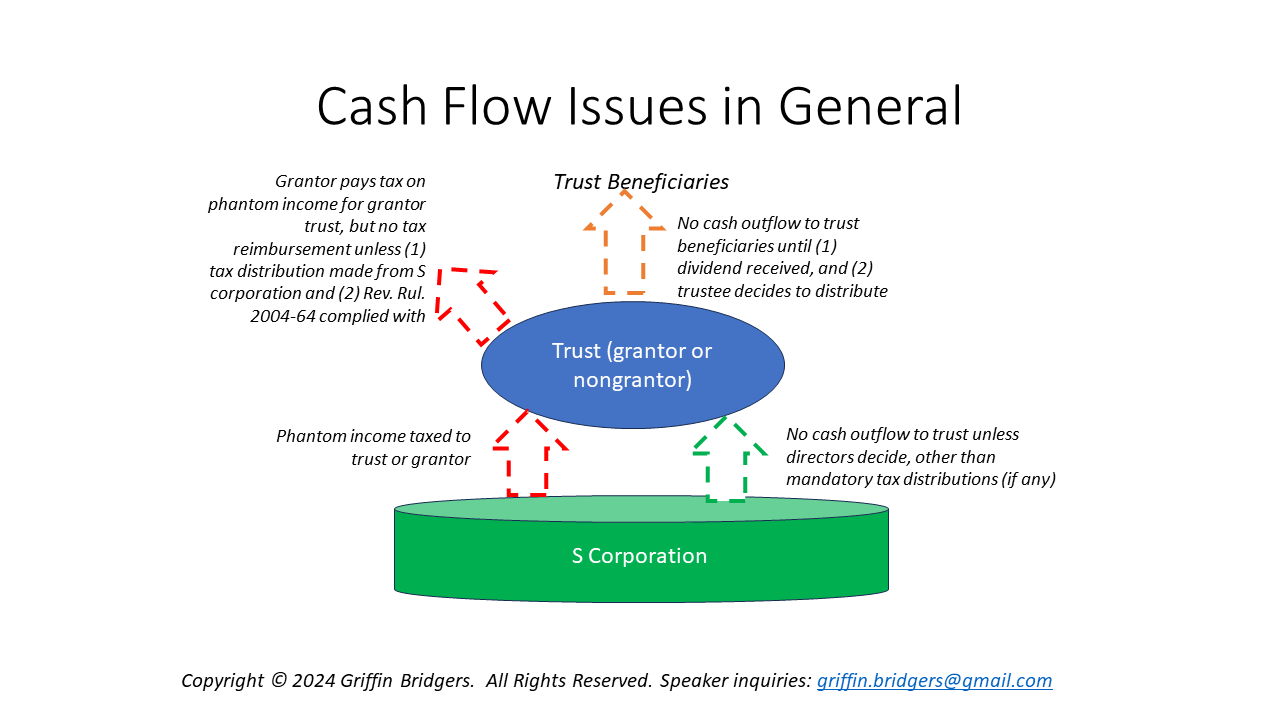C and S Corporations for Estate Planners: Income-Shifting and Grantor Trusts
Examining income tax issues that often fly under the radar
This is the sixth installment of C and S corporations for estate planners.
For the prior article in this series, click here.
For the first article in this series and a series index, click here.
Table of Contents
Intro
One key difference between a C corporation, and an S corporation (or tax partnership), is that a C corporation is not a pass-through entity. As a result, it pays its own income tax. However, shareholders receiving actual or constructive dividends, or having their stock redeemed, must pay income tax on such cash outflows.
In either case, the flow of actual cash is controlled at the entity level. For pass-through entities like an S corporation or partnership, this dynamic creates what is known as “phantom income” – income on which shareholders (or partners) are taxed, but for which no cash is received.
This usually is not a problem for a C corporation making cash distributions, as the tax liability correlates to the receipt of cash. But, if property (including stock in the C corporation) is received in a distribution that is subject to income tax, then the shareholder receiving the property can still end up in a cash crunch.
These issues are especially important in estate planning. While perhaps oversimplified, there is often a tension between those managing a business (who want to retain cash for business needs) and those receiving equity in a business (who want to receive cash distributions). This tension is exacerbated in situations where equity is transferred to other individual family members, and trusts, which do not participate in the business. While there are several non-tax considerations, and even general income tax considerations, this article focuses on some of the issues that arise with the shifting of taxable income - especially where grantor trusts are involved. In this vein, we must also consider the shifting of voting power and how that might affect cash flow.
(Note that, in this article, I do not discuss many of the individual shareholder-level tax considerations such as the kiddie tax, at-risk rules, and passive activity rules.)
Income Shifting
Without going into great detail, income that is generated by capital can generally be shifted among family members. However, income attributable to the performance of services by one family member cannot be shifted to a family member not performing services. This outcome is reflected in IRC Section 704(e) for partnerships, and IRC Section 1366(e) for S corporations. Of course, in either case, the scope of this shift (or lack thereof) starts with a determination of whether the service provider received “reasonable compensation” for services rendered.
Keep reading with a 7-day free trial
Subscribe to State of Estates to keep reading this post and get 7 days of free access to the full post archives.





